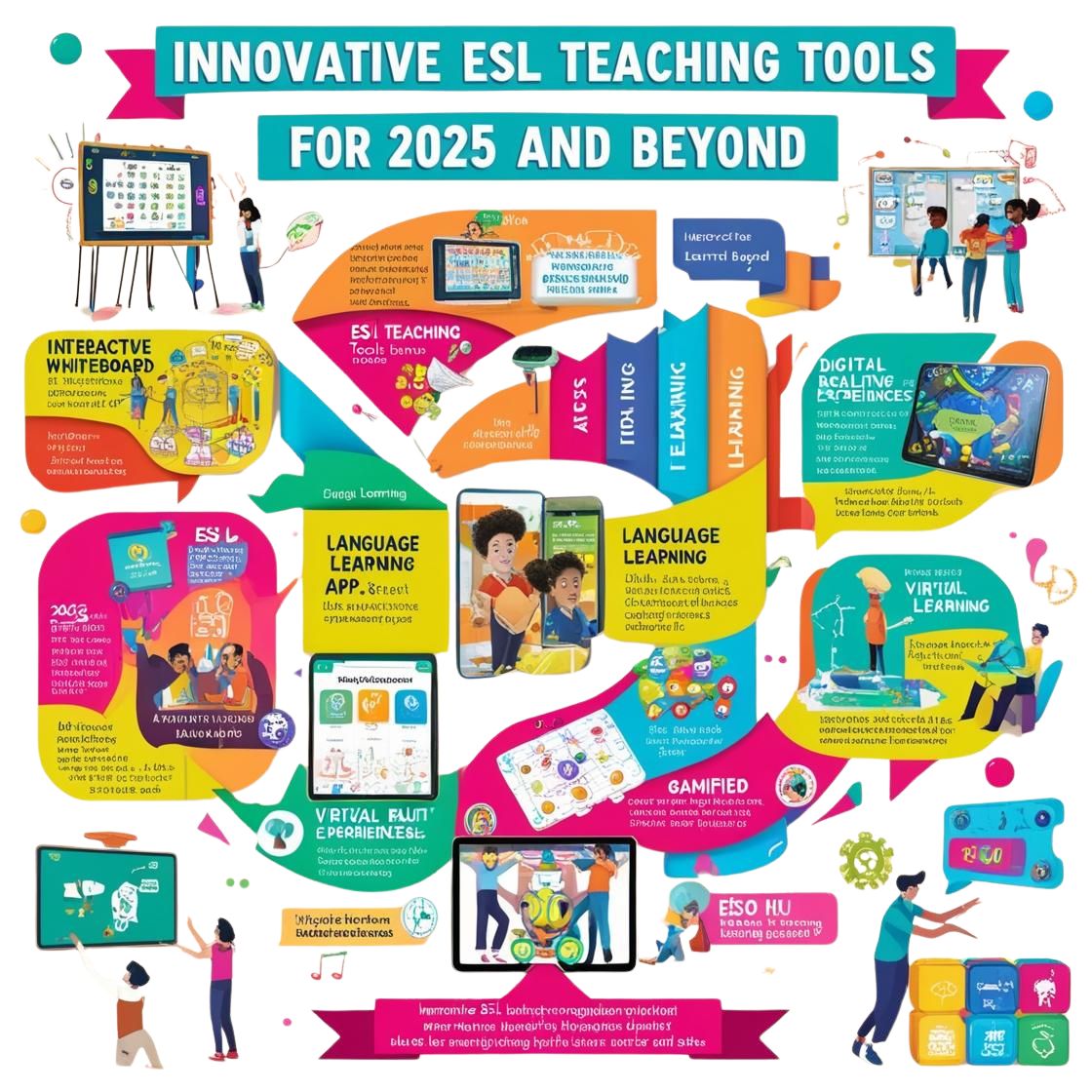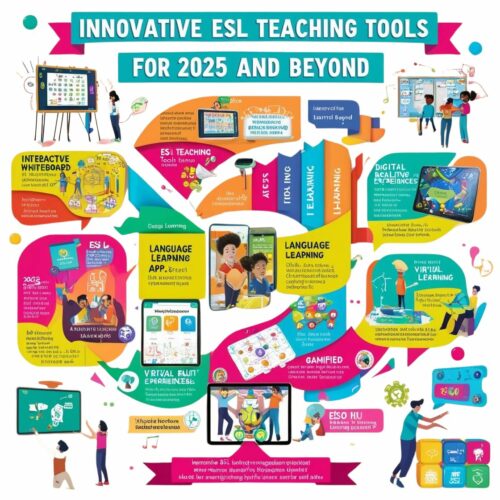Artificial Intelligence is shaking things up in the ESL teaching world, and it’s pretty exciting! Forget the scary narratives. While it may seem like something out of a sci-fi movie, AI’s nothing to be afraid of. In reality, it’s your new best friend in the classroom. As a teacher, you can use AI to quickly tailor lessons to fit your students’ needs. Whether it’s generating extra practice exercises or helping analyze student performance, AI is all about making your job easier and better.

Let’s clear up any misconceptions about AI. It’s not replacing teachers. Instead, think of it as your assistant – one that’s always eager to jump in and help. For adult learners, AI tools can offer interactive grammar exercises or help improve their conversational skills by mimicking real-world scenarios. Sounds neat, right? Having such a tool by your side means more personalized attention for your students.
Imagine this: your students logging in to a platform that adapts as they learn. AI tracks their progress and suggests resources tailored just for them. The result? Engaged students working at their own pace, all while you focus on what you do best — teaching! It’s transformative, and seeing your students motivated and excited makes it all worthwhile.
Across the globe, teachers are sharing stories of how AI helped ignite curiosity and participation in their classrooms. From chatbots that boost writing exercises to apps perfect for pronunciation practice, teachers are using AI to enrich student experiences and improve outcomes. The takeaway? AI isn’t just a tool; it’s a game-changer in modern ESL education.
Augmented Reality: Bringing Lessons to Life
Augmented Reality or AR is taking ESL classes to the next level by making learning truly immersive. Think of it as bringing your teaching materials alive. Instead of listening to static vocabulary, students can see and interact with 3D models right in front of them. It’s like turning your classroom into a live action scene straight from a movie.
Picture this: your students are learning about various food items. With AR, they can interact with virtual representations of these objects, helping them visualize and remember better. This interactive experience makes abstract concepts more concrete, which is particularly handy for beginners trying to grasp new words and phrases.
AR creates opportunities for interactive storytelling in language lessons. Students can explore AR scenes that encourage language practice in contexts they relate to. It’s not just about listening and repeating; it’s about experiencing and reacting, which keeps students engaged and wanting more.
What’s really cool is using AR apps that cater to adult learners, letting them practice conversations in simulated environments. Imagine them at a virtual airport, going through customs, all while honing their language skills in a safe, risk-free setting. This hands-on learning builds confidence like nothing else.
More and more classrooms are seeing real-world benefits from AR. Teachers report how AR has improved student focus and retention. When students can see words come alive, their learning shifts from passive to active. Plus, it’s just plain fun, making both teaching and learning a more enjoyable ride.
Digital Resources: A Repository of Knowledge
The internet is a treasure trove of ESL teaching tools just waiting to be tapped into. Digital resources can open up a whole new world of possibilities in the classroom. Ready-to-go online platforms offer everything from lesson plans to interactive exercises, meaning you can spend less time prepping and more time doing what you love—teaching!
Platforms like Duolingo or Rosetta Stone provide in-depth language learning experiences that are adaptable for both classroom and individual use. What’s great about these resources is how they combine visual, auditory, and kinesthetic learning styles, engaging students in multiple ways. This creates a more rounded learning experience, perfect for adult beginners needing varied methods to grasp the language.
Digital worksheets and quizzes can transform your lessons. They allow quick sharing with students and provide instant feedback. By using these resources, you can easily assess their understanding and tailor subsequent lessons accordingly. Plus, they save trees, so it’s a win-win!
Incorporating multimedia into lessons brings an extra flair. Think videos, podcasts, or interactive tutorials—materials like TED Talks or YouTube channels focused on ESL are goldmines. They help break the monotony and offer students more exposure to natural language use while also expanding their cultural understanding.
The best part? Many digital resources are free or very affordable, making them accessible to everyone. It’s a smart choice for any teacher aiming to deliver high-quality education without breaking the bank. With these tools at your disposal, you’re not just teaching a language; you’re opening doors to a broader, more connected world.
Community-Driven Learning: Forums and Collaboration
Teaching doesn’t have to be a solo journey. There’s a whole world of fellow ESL teachers ready to share insights and support, especially online. Joining teacher communities can be transformative for your teaching career, providing fresh ideas and collaborative opportunities.
Online forums and discussion groups like those on Reddit or specialized ESL teaching sites are vibrant spaces where you can ask questions, share experiences, and find solutions to everyday challenges. Being part of such communities means you’re tapping into a collective pool of knowledge, making teaching feel less daunting.
Participating in webinars and online workshops offered by teaching organizations or platforms leverages the power of live, interactive learning. These sessions often tackle the latest trends, tips, and tricks in ESL instruction, helping you stay ahead of the curve. Plus, they offer networking opportunities with educators from around the world.
In California, where I teach, there is an organization by the name of The California Council For Adult Education (CCAE). On a national level in the United States is an organization by the name of The Coalition of Adult Basic Education (COABE).
Both organizations are devoted to advocating for adult education in general as well as to be supportive. Both have regular conferences where educators gather to share ideas and learn about the latest technology and trends, as well as best practices, not to mention a way to network with other educators.
I’ve learned more than I can explain in this writing from being active with both organization
If you’re not familiar, I highly recommend that you become familiar and become active in one or both. If there’s not one of them anywhere near you, perhaps you can be insturmental in creating one that is near you.
I’m happy to help.
Consider peer feedback initiatives, where teachers share lesson plans or teaching videos and provide constructive feedback to each other. It’s like having a global team on your side, dedicated to helping you grow and refine your craft.
Harnessing the power of collaboration not only enhances your teaching strategy but also enriches your personal growth. When you’re learning alongside others and exchanging ideas, you’re not just improving your skills— you’re contributing to a dynamic, global teaching community.
Creating a Balanced Toolkit: Integrating Traditional and Modern Methods
Blending traditional teaching tools with modern technology can offer a richer educational experience. Keeping a balanced approach ensures that you’re meeting the diverse needs of your students while also staying fresh and relevant as an educator.

Traditional methods, like face-to-face interactions and direct instruction, remain crucial, especially for building strong foundational skills. For many adult learners, hands-on practice and personal encouragement make a big difference in confidence and progress.
Pairing these with modern tech tools such as language apps and digital platforms helps you reach students in different ways. This hybrid approach caters to varied learning styles, making lessons more engaging and effective overall. Students get the benefits of direct interaction as well as the flexibility of self-paced learning.
It’s essential to listen to your students’ feedback and adapt accordingly. What works for one class might not suit another, so being flexible and willing to tweak your methods is key. This responsiveness not only improves your teaching strategy but also shows students that their learning preferences and progress matter.
Staying updated on the latest teaching innovations ensures that your toolkit remains versatile and effective. It doesn’t mean chasing every new trend, but finding what genuinely enhances teaching and learning outcomes. By embracing both old and new, you’re providing a comprehensive and modern learning experience, perfectly equipped to navigate the world of ESL in 2025.
Leave comments and questions in the space below.


Great insights on how AI is enhancing ESL education!
The personalized approach AI offers is a game-changer, and the use of AR makes learning interactive. It’s also encouraging to see the emphasis on community and collaboration among educators.
One question I have is about the balance between traditional teaching methods and modern technology. How do you ensure that the incorporation of tech tools doesn’t alienate students who may be less tech-savvy or comfortable with digital learning platforms?
Hi Shaun, thanks for your comments. As for your question, there are several students, usually older students, who not only “less tech-savvy”, they’re basically tech illitrate. It takes time to bring them along and sometimes have do some hand-holding.
KBob